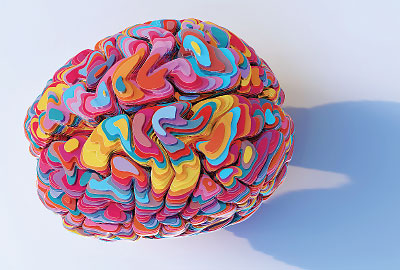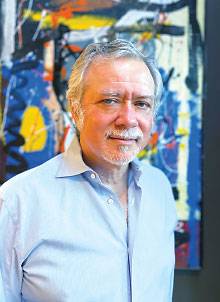Case Studies Suggest DBS May Improve Symptoms in Treatment-Resistant Schizophrenia
Abstract
Two recent case studies show promise for the use of deep brain stimulation (DBS) as an alternative therapy for patients with treatment-resistant schizophrenia, but the research is in its early days.

Patients with treatment-resistant schizophrenia are among the most challenging to treat, with up to 30% of patients responding poorly to antipsychotic medication. Of those, as many as 60% also fail to respond to clozapine. Deep brain stimulation (DBS) has been used with some success in Parkinson’s disease and other movement disorders but has not been well studied for schizophrenia.
In a case study published in Biological Psychiatry on April 24, Nicola Cascella, M.D., an assistant professor of psychiatry and behavioral sciences at Johns Hopkins Medicine, and colleagues reported that low-voltage DBS applied bilaterally to the substantia nigra pars reticula (SNr) of a patient resulted in meaningful reductions in positive symptoms including hallucinations and paranoid ideation. There were also slight reductions in negative symptoms, including anhedonia, asociality, and apathy. The improvements remained stable at one-year follow-up. The authors noted that temporarily discontinuing or decreasing the stimulation led to immediate return of hallucinations.
The patient, a 35-year-old Caucasian woman, was simultaneously taking multiple medications, the dosages of which were modified during the study. Oxcarbazepine 600 mg was discontinued, while quetiapine was increased from 200 mg to 400 mg for sleep. The patient continued to receive haloperidol at a slightly reduced dose (25 mg from 30 mg) and sertraline was increased from 50 mg to 100 mg; the dextroamphetamine dosage of 50 mg twice daily was unchanged.

The research team hopes to develop a DBS system that will activate only when auditory hallucinations occur and thereby prevent them, says Nicola Cascella, M.D.
Cascella told Psychiatric News that he hopes to eventually taper the patient off haloperidol entirely and noted that after publication of the case study results, the dosage was further dropped to 20 mg. It is not possible to extrapolate from this single case, however, whether DBS may eventually be able to replace antipsychotic medications, he said.
Although there were no significant complications, the patient gained 33 pounds over the initial three months of the study, resulting in a weight of 314 pounds. Conversely, the patient experienced a marked increase in verbal fluency following DBS—in contrast to what commonly occurs with DBS for Parkinson’s—but experienced a decline in verbal and visuospatial learning and memory. At the next follow-up, the patient showed an increase in those measures “trending toward her performance before DBS,” Cascella said. The research team is now “more confident that DBS does not have a detrimental effect on cognitive performance.”
The patient has been on disability for many years, and the last time she attempted to work, she lost her job after only one day. Cascella said he is hopeful that the improvements associated with DBS will permit the patient to sustain employment.
If further clinical trials with greater numbers of patients continue to show promise, Cascella believes that more patients with treatment-resistant schizophrenia will become interested in DBS. It is not yet possible, however, to know how patients and their families may view this kind of treatment. His research team is currently collaborating with the University of Colorado-Denver School of Medicine and Baylor College of Medicine to assess patient and family attitudes toward DBS for schizophrenia.
The research team is also applying for a grant from the National Institute of Mental Health to record in real time how stimulation impacts physiological markers correlated with auditory hallucinations. The aim is to set up a “closed loop” DBS system that turns on stimulation only when physiological markers show that auditory hallucinations are present and thereby prevent them, Cascella explained.
The use of low-voltage DBS in the case study contrasts with one of the few other studies that explored the use of DBS to treat schizophrenia, which employed significantly higher voltage at a different site (nucleus accumbens). In a discussion accompanying the article in Biological Psychiatry, Cascella contrasted the two studies, noting that significantly higher levels of electronic stimulation were required to achieve a therapeutic effect. That a meaningfully lower stimulation at the SNr site yielded comparable therapeutic effects suggests that SNr presents a highly specific target for maximizing therapeutic efficacy while minimizing risk of adverse effects, he added.
“High-stimulation parameters were necessary in the nucleus accumbens group, with peak settings of 7.5 V, 210 Hz, and 210 ms. We report antipsychotic effects with low-amplitude SNr stimulation, suggesting high specificity of this target and minimal risk of adverse effects owing to limited stimulation of neighboring structures.”
While it is always difficult to generalize from a single-subject case study, said Cascella, “our results are suggestive of high specificity.”
The other study of DBS for schizophrenia by psychiatrist Peter J. McKenna, M.D., and colleagues at the FIDMAG Sisters Hospitallers Research Foundation in Barcelona, Spain, evaluated seven patients. The study was published January 8, 2020, in EBioMedicine.
The study had promising results but some significant complications. It began with eight subjects, but one was dropped from the study after postsurgical complications developed. The risk of postsurgical complications is an issue for any highly invasive therapy, but overall DBS has been well tolerated, with a postsurgical complication rate of 1% to 3%, according to McKenna. Although adverse physical events were uncommon, two of the seven patients developed persistent adverse psychiatric effects of apathy and mood instability. Overall, said McKenna, his study suggests DBS holds promise for treatment-resistant schizophrenia.
The case study by Cascella and colleagues is “clearly encouraging, particularly in view of the full remission of hallucinations and other positive symptoms with immediate return of hallucinations when the stimulation was turned off unknown to the patient,” McKenna commented.
McKenna said that he does not know why different placements would be effective, but the research is in its early stages. “It may well be that an explanation will present itself as more patients are treated and reported.”
McKenna and colleagues are applying for a grant to treat more patients using DBS at the nucleus accumbens, while another group with whom they are not collaborating has received a grant to study DBS in areas of the ventral striatum other than the nucleus accumbens. ■



